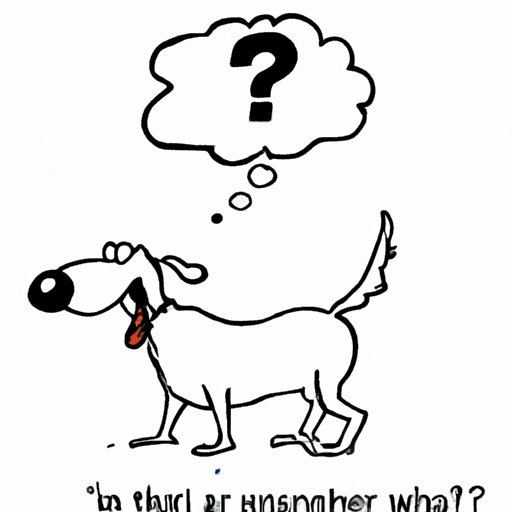“`markdown
Why Do Dogs Wag Their Tails?
As a caregiver, you are not only responsible for the physical well-being of your dog, but also their emotional well-being. One of the ways dogs communicate their emotions is through their tails. Understanding why dogs wag their tails can help you better respond to their needs and strengthen your relationship with them.
Tail Wagging: A Form of Communication
Dogs use their tails to communicate a variety of emotions and signals. Tail wagging can indicate happiness, fear, anxiety, or even a warning signal. The speed, direction, and position of the tail wag can give us an idea of what they’re trying to convey.
- Fast wagging: This typically indicates excitement or anticipation, such as when they see you after a long day or when it’s time for a walk.
- Slow wagging: On the other hand, slow wagging might be a sign of insecurity or nervousness.
- Wagging to the right: Research has shown that dogs tend to wag their tails to the right when they’re happy or relaxed.
- Wagging to the left: Conversely, wagging to the left might indicate negative emotions like fear or aggression.
Knowing these signals can help you better understand and respond to your dog’s emotional state.
Tail Wagging and Breed Differences
Different breeds of dogs have different tail wagging tendencies. Some breeds are known for their “happy” tails, wagging at the slightest sign of excitement, while others are more subdued.
Here are a few examples:
| Breed | Tail Wagging Tendency |
|---|---|
| Labrador Retriever | Often wagging, indicating a friendly and outgoing personality |
| Akita | Rarely wags tail, indicating a more reserved and aloof personality |
| Beagle | Frequently wags tail, indicating an excitable and curious personality |
Interpreting Tail Positions
In addition to the speed and direction of the wag, the position of the tail also plays a crucial role in communication.
- Raised tail: A raised tail often signifies that the dog is alert and attentive. It could also be a sign of aggression if combined with stiff body language.
- Lowered tail: A lowered tail usually indicates that the dog is relaxed, but if it’s tucked between the legs, it could be a sign of fear or submission.
When Tail Wagging Indicates Health Issues
Tail wagging is generally a normal behavior for dogs, but excessive or unusual wagging could indicate a health issue. For example, if your dog is wagging their tail excessively even in the absence of stimuli, or if they seem to be in pain when wagging their tail, it might be a sign of a medical problem, such as a tail injury or a neurological issue. In such cases, it’s best to consult with a veterinarian.
FAQs
Q: Can tail wagging be controlled by dogs?
A: Generally, tail wagging is an involuntary reaction to emotional stimuli. However, some dogs may learn to control their tail wagging to some extent, especially if they’ve been trained to do so.
Q: What if my dog doesn’t wag their tail at all?
A: Some dogs naturally wag their tails less than others. However, if your dog suddenly stops wagging their tail altogether, it could be a sign of a health issue and you should consult with a veterinarian.
Q: Can I train my dog to wag their tail in a certain way?
A: While you can train dogs to perform certain actions, trying to control their natural form of communication might not be beneficial. It’s more important to understand and respect their natural way of expressing themselves.
Understanding why dogs wag their tails is a crucial aspect of caring for your canine companion. By paying attention to their tail wagging, you can gain insights into their emotional state and better cater to their needs. Remember, every dog is unique and understanding their individual communication style is key to building a strong and nurturing relationship.
“`



